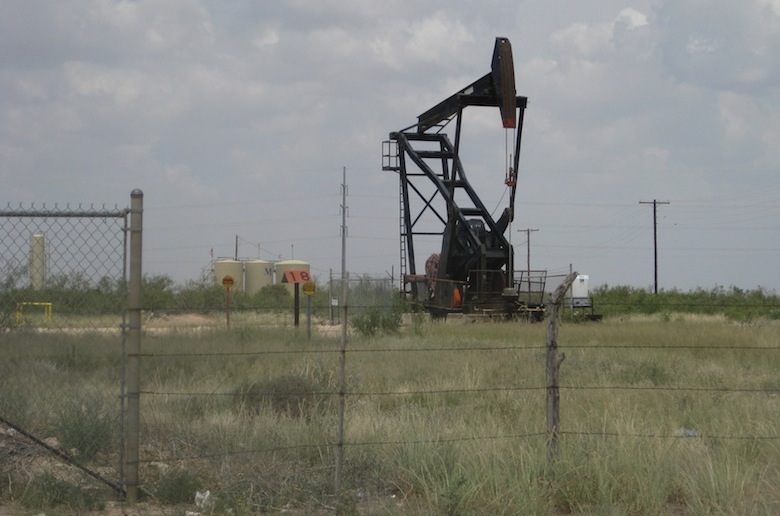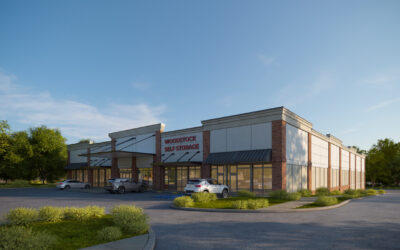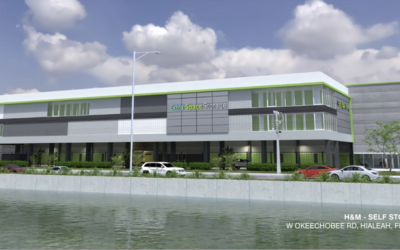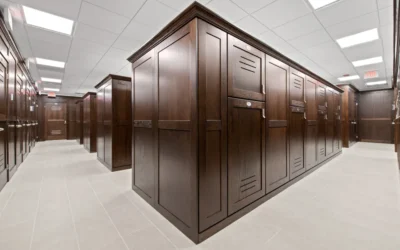Self-storage investors frequently focus on major markets like Atlanta, GA; Dallas-Fort Worth, TX; and Phoenix, AZ. After all, top-tier metro areas are where the most people — and potential customers — are.
Yet if you look at where the most population growth is occurring on a percentage basis, it’s not those places. Rather, the metro areas seeing the biggest population bumps are secondary and tertiary markets outside the top 20 metro areas — locations like Myrtle Beach, SC; Boise, ID; Austin, TX; and Raleigh, NC.
According to estimates released April 18 by the U.S. Census Bureau, all of the 10 fastest-growing metro areas from 2017 to 2018 have populations below 750,000. Meanwhile, only three metro areas with more than 1 million residents (Austin, Raleigh and Orlando, FL) cracked the top 10 for percentage growth among all metro areas from 2010 to 2018.
So, do these population trends mean self-storage investors should mine secondary and tertiary markets for opportunities?
Fastest growing markets
Experts say it’s certainly worth exploring these markets for potential self-storage acquisitions and developments, and many developers have been throughout the current development cycle.
Mike Mele, vice chairman of commercial real estate services company Cushman & Wakefield and head of its Self-Storage Advisory Group, said it’s less challenging to build self-storage facilities in secondary and tertiary markets, thanks to lower barrier-to-entry factors such as cheaper land.
However, he added, it can be tougher to turn a profit with facilities in secondary and tertiary markets, given the lower rents compared with primary markets. Furthermore, Mele said, smaller populations translate into a lack of power to push up rental rates and a risk that new competitors will come into an easier-to-enter market.
Conversely, higher cap rates in secondary and tertiary markets enable an investor to make more money, Mele said. Additionally, operators in secondary or tertiary markets typically face far less competition from the big self-storage REITs.
“Overall, we are seeing smaller players and investors acquiring facilities in these secondary and tertiary markets due to the higher yields they can provide,” Mele said.
For example, self-storage REIT Global Self Storage Inc. said in its April earnings April earnings release that the company is seizing opportunities for revenue and NOI growth by purchasing and expanding self-storage facilities in underserved secondary and tertiary markets across the Northeast, Mid-Atlantic and Midwest.The operator currently owns 11 facilities in seven states.
Growth doesn’t tell the whole story

An oil well in Odessa, TX, one of the country’s fastest growing metro areas.
Just because a market is growing fast, doesn’t mean it’s open season for storage development.
Take for example Midland, TX, the country’s fastest-growing metro area (4.3 percent) from 2017 to 2018, and nearby Odessa, which stood in fifth place (3.2 percent). Information supplied to the SpareFoot Storage Beat by data provider Yardi Matrix shows just seven self-storage acquisitions occurred in both cities in 2017 and 2018. Meanwhile, just three facilities are in the development pipeline in Odessa, according to the Yardi Matrix data, and none in Midland.
While growing at a rapid clip, the combined population of the Midland and Odessa metro areas barely exceeds 340,000. In other words, Midland-Odessa lacks a deep pool of potential self-storage renters.
Mele said the three key factors in determining whether a self-storage site is viable are:
- Market rental rates.
- Current square footage per person.
- Household income.
That said, forecasts of population growth are critical in weighing the prospects for existing and future facilities, according to Mele.
Here come the big guys
Steve Hajewski, marketing manager at Sun Prairie, WI-based self-storage construction supplier Trachte Building Systems Inc., said that even big self-storage operators are venturing into smaller markets than they have in the past. He said some of these projects are big-box conversions in secondary markets — the kinds of projects that self-storage operators like Phoenix, AZ-based U-Haul International regularly tackle.
“Secondary markets tend to have lower-cost land and may have competitors that are less savvy — opening the door for experienced operators to leverage their know-how,” Hajewski said.
Terry Campbell, leader of the self-storage lending division at Wilmington, NC-based Live Oak Bank, said opportunities in secondary and tertiary markets can involve buying an asset that’s been poorly managed and then boosting revenue through renovation, expansion or technology upgrades. Or those opportunities might rest with a ground-up or conversion project, he said.
“Until recently, a lot of emphasis was put on the top metro areas, and the secondary metro areas were an opportunity for those who couldn’t get into the top markets or that just didn’t want to play in the more competitive markets,” Campbell said.
A delicate balance
If an investor does want to place emphasis on a secondary or tertiary market, they should gain a good grasp of the market dynamics, Campbell advised. For instance, do most local residents work for a single employer or industry? If so, what would happen if that employer or industry suffered a setback?
Campbell added that population growth always is an important factor in looking at buying or building in a secondary or tertiary market.
“They should make sure that the area isn’t shrinking or dying. Eventually, attrition will take business away; you need new blood to keep those units full,” Campbell said.
However, Ryan Clark, director of investment sales at Tampa, FL-based self-storage real estate firm SkyView Advisors, noted that even modest to flat population growth might be OK, as long as the underlying supply-and-demand balance remains healthy.
In the end, secondary and tertiary markets deliver better supply metrics than bigger markets, Clark said. In fact, he added, some individual investors, private equity firms and REITs are chasing deals in secondary markets thanks to the relatively low supply risk as well as the attractive value-add opportunities.
“New supply is important to understand, as even a single new development can significantly disrupt the supply picture in a thinly populated area,” Clark said.
Fastest-growing metro areas (2017-2018)
| Rank | Metro area | July 2017 population | July 2018 population | % change |
| 1 | Midland, TX | 170,948 | 178,331 | 4.3% |
| 2 | Myrtle Beach, SC | 463,386 | 480,891 | 3.8% |
| 3 | St. George, UT | 165,859 | 171,700 | 3.5% |
| 4 | Lakeland-Winter Haven, FL | 685,830 | 708,009 | 3.2% |
| 5 | Odessa, TX | 157,173 | 162,124 | 3.2% |
| 6 | The Villages, FL | 124,933 | 128,754 | 3.1% |
| 7 | Greeley, CO | 305,274 | 314,305 | 3.0% |
| 8 | Boise, ID | 710,080 | 730,426 | 2.9% |
| 9 | Bend, OR | 186,807 | 191,996 | 2.8% |
| 10 | Provo, UT | 617,751 | 633,768 | 2.6% |
Source: U.S. Census Bureau







